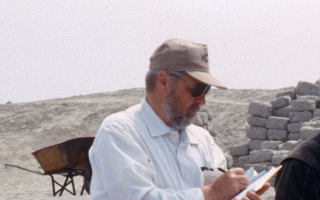As an engineer of electronics and nuclear physics, Hugo Houben embarked on another path, more in line with his ethical commitments. At the age of 28, he responded to a request to participate in the construction of a popular village in Algeria. It was then that he discovered that earth can be a good construction material and that he launched into research to satisfy his immense curiosity, but above all, to understand and disseminate better what appeared to him to be a tremendous potential in response to emerging ecological issues.
From his meeting with Patrice Doat, still a student at the Grenoble School of Architecture (ENSAG), the Center for the Research and Application of Earth Architecture - CRATerre - was born. Subsequently, the eponymous research laboratory at ENSAG was formalized resulting in many contributions to the development of new technologies, and a specialized post-master level training course, now known as the DSA Earth Architecture, was launched. Later, he contributed to the creation of the UNESCO Chair on Earthen Architecture and then to those of the Grands Ateliers de l'Isle d'Abeau (GAIA).
In the 1980s, his meeting with Alejandro Alva, a staff member at ICCROM, led to the introduction of earthen architecture as an area of training given by ICCROM, and then to the revival of the ICOMOS International Committee for Earthen Architecture (ISCEAH) and a series of international conferences (Terra) that continues to this day.
Beyond that, two framework programmes were launched, first "GAIA", then "Terra", which saw the Getty Conservation Institute join ICCROM and CRATerre in developing knowledge on earthen architecture, and in response to specific problems encountered in their conservation. These two programmes would become an opportunity to train professionals from all over the world with the organization of six international courses called Preservation of Earthen Architecture (PAT), including four organized in Grenoble, France (1989, 1990, 1992, 1994) and two in Trujillo and Chan Chan in Peru (1996, 1999).
Hugo also played an essential role in the launch of the architectural component of the PREMA-Benin II project on the Royal Palaces of Abomey in Benin, which would be the starting point of a significant ten-year programme that ICCROM carried out with UNESCO, CRATerre and African institutions in charge of heritage: AFRICA 2009. Later, he also supported the involvement of CRATerre in the training provided by ICCROM’s ATHAR programme for the Arab countries.
Hugo has always shown incredible generosity throughout his professional life, and with this a particular dedication to sharing knowledge with heritage professionals but also the general public, especially young people. This is how a whole generation of professionals from all over the world have thus benefited from his commitment, rigor, professionalism, and sense of humor and know-how towards a better world for as many people as possible.
Thank you, Hugo, for your genius, which you shared with many of us and that will radiate for a long time to come in many minds around the world.
Thierry Joffroy, on behalf of CRAterre team

